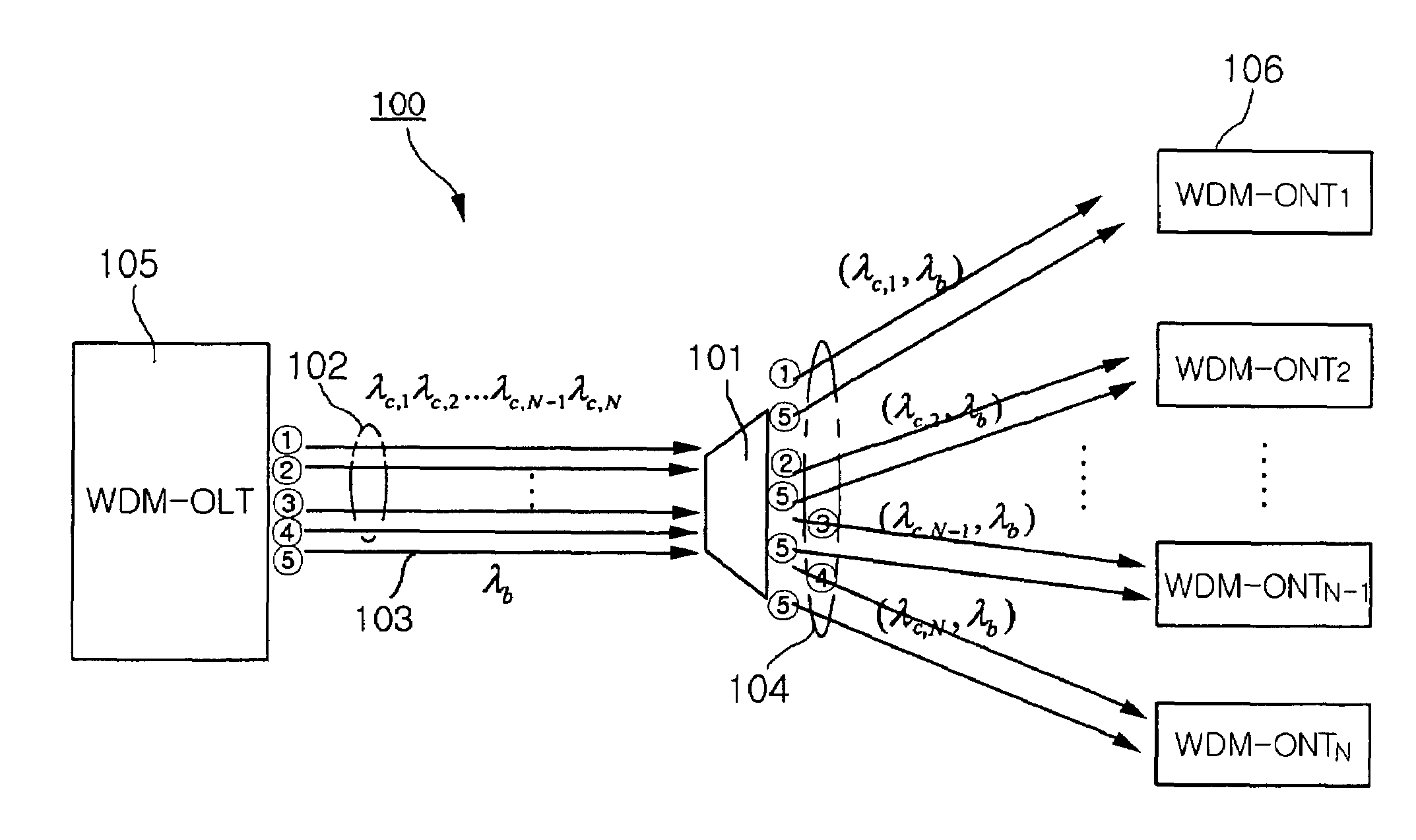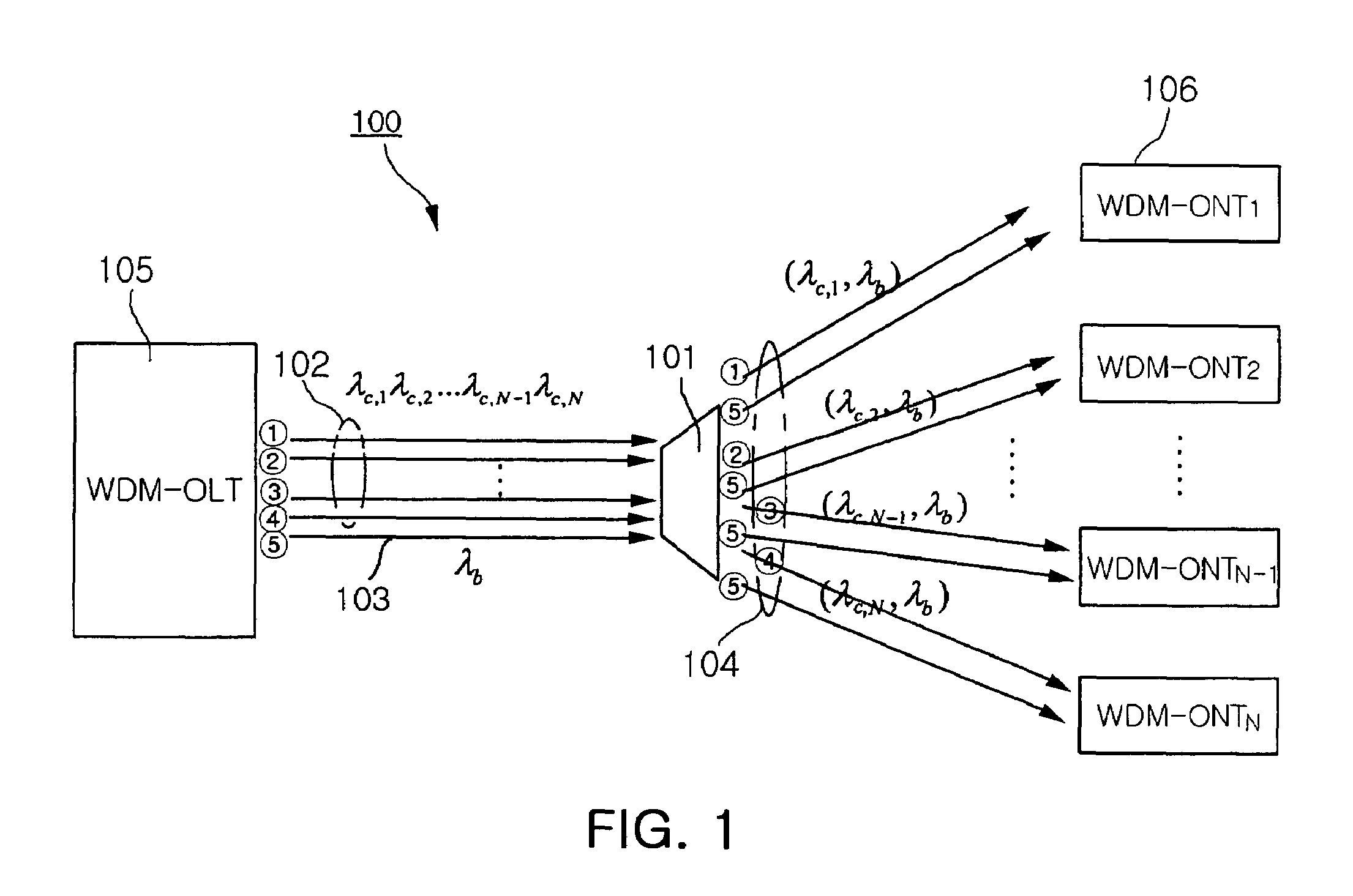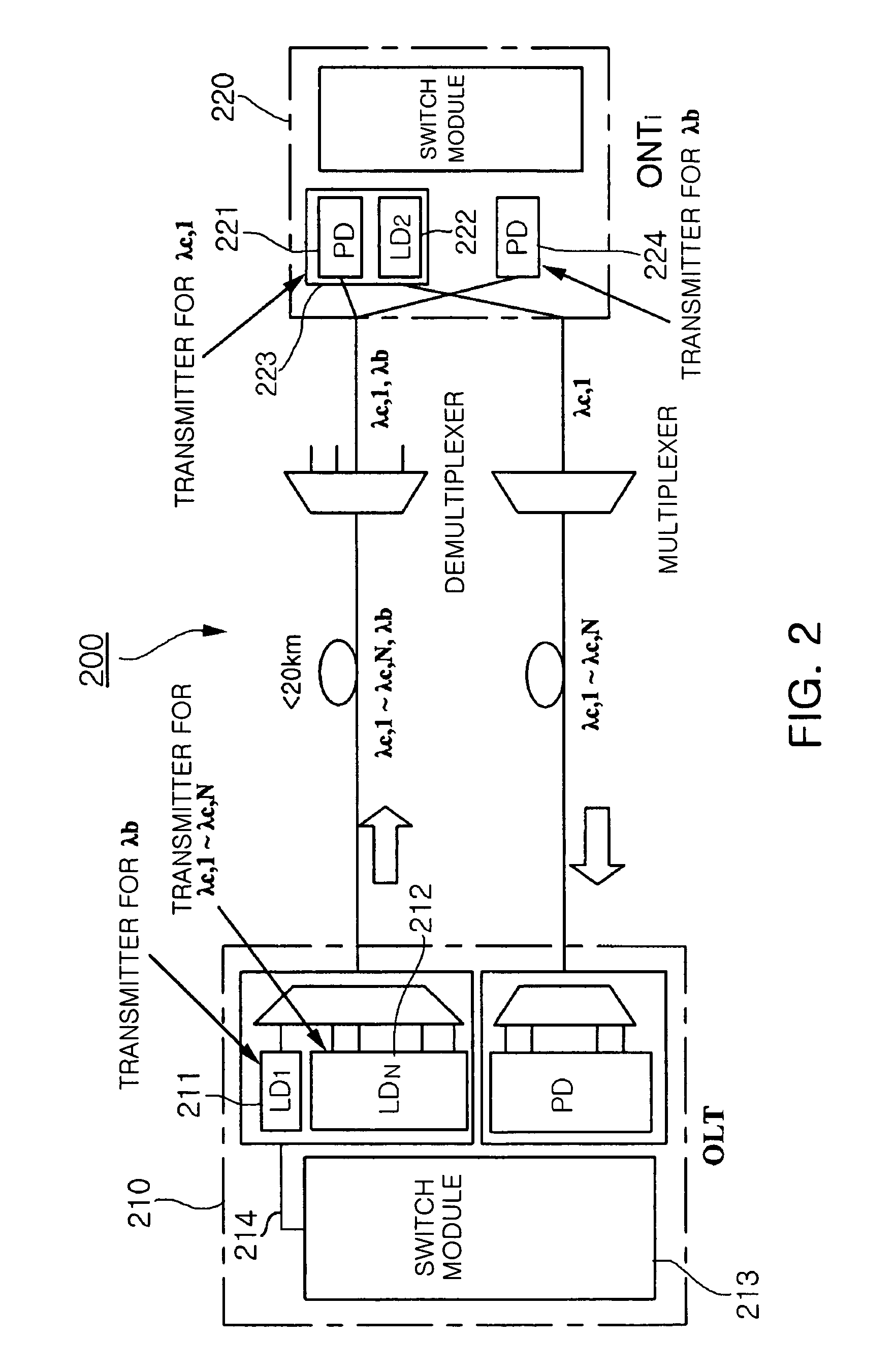Dynamic multicast group management and service wavelength allocation method for communication-broadcasting convergence service in WDM-PON
a technology of dynamic multicast and wavelength allocation, applied in the field of dynamic multicast service in a wavelength division multiplexed passive optical network, can solve the problems of many problems in the subscriber network structure providing real-time broadband service, preventing the quality of broadcasting service from being degraded, and limited communication having a point-to-point information exchange function. achieve the effect of maximum multicast servi
- Summary
- Abstract
- Description
- Claims
- Application Information
AI Technical Summary
Benefits of technology
Problems solved by technology
Method used
Image
Examples
Embodiment Construction
[0026]The present invention will now be described in detail in connection with preferred embodiments with reference to the accompanying drawings.
[0027]FIG. 1 is a view showing the entire configuration of a hybrid type WDM-PON to which the present invention is applied.
[0028]As shown in FIG. 1, the hybrid type WDM-PON 100 to which the present invention is applied has a typical tree structure that is centered around an optical splitter 101. The hybrid type WDM-PON 100 has a cost saving effect because optical fiber used in a plurality of subscriber services is shared up to a maximum distance. In order to apply WCM technology to a PON type subscriber distribution structure, a wavelength multiplexer / demultiplexer that separates a plurality of multiplexed wavelengths from a single strand of optical fiber is employed as the optical splitter 101. According to current technology, a maximum of about 16 or 32 wavelengths can be used through the use of an Arrayed Waveguide Grating (AWG). An WDM-...
PUM
 Login to View More
Login to View More Abstract
Description
Claims
Application Information
 Login to View More
Login to View More - R&D
- Intellectual Property
- Life Sciences
- Materials
- Tech Scout
- Unparalleled Data Quality
- Higher Quality Content
- 60% Fewer Hallucinations
Browse by: Latest US Patents, China's latest patents, Technical Efficacy Thesaurus, Application Domain, Technology Topic, Popular Technical Reports.
© 2025 PatSnap. All rights reserved.Legal|Privacy policy|Modern Slavery Act Transparency Statement|Sitemap|About US| Contact US: help@patsnap.com



